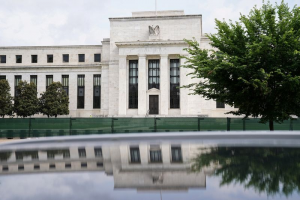Gold prices fell on Wednesday under pressure from rising U.S. Treasury yields and a stronger dollar after data suggested the Federal Reserve may slow down rate cuts this year.
Kelvin Wong, the Asia-Pacific market analyst at OANDA, commented: "The dollar index rose on hopes that we may see a less volatile monetary policy from the Federal Reserve this year, leading to a decline in gold prices."
The dollar strengthened, and the 10-year U.S. Treasury yield climbed to its highest level in eight months following Tuesday's data, which pointed to economic resilience.
Job openings in the U.S. rose to 8.098 million in November, surpassing expectations and up from 7.839 million in October.
Markets now anticipate only one rate cut by the Federal Reserve in 2025, compared to the two cuts expected in December, according to the Fed rate tracking tool on Investing Saudi.
Investors are now awaiting the U.S. non-farm payrolls report on Friday for further insights into the Fed's policy direction. Additionally, ADP employment data and the minutes from the Federal Reserve’s December meeting, due later today, remain key market focal points.
Analysts at KCM Trade noted in a memo: "Any weakness in U.S. economic data this week could pave the way for gains if investors grow more optimistic about the likelihood of a Fed rate cut in 2025."
Higher interest rates reduce the appeal of non-yielding assets like gold.
In a related development, China, the world's largest gold consumer, increased its gold reserves in December for the second consecutive month, according to official data released by the People's Bank of China on Tuesday.













